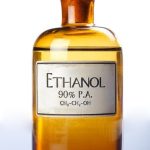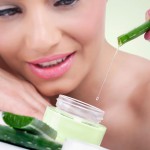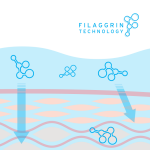Sodium Lauryl Sulfate (SLS) is de INCI-naam voor natriumlaurylsulfaat (oftewel natriumdodecylsulfaat).
Sodium Lauryl Sulfate is een sterk reinigende stof met alle chemisch-fysische eigenschappen van een reiniger: desorptie, dispersie, emulgatie, oplossing, bevochtiging en schuimvorming. Sodium Lauryl Sulfate is een goedkoop ingrediënt en wordt derhalve gebruikt in tal van reinigende cosmeticaproducten, zoals douchegel, shampoo en tandpasta.
Sodium Lauryl Sulfate (SLS) dient niet te worden verward met het stukken mildere sulfaat Sodium Laureth Sulfate (SLES)!
De veiligheid van Sodium Lauryl Sulfate in cosmetica
De veiligheid van het gebruik van Sodium Lauryl Sulfate in cosmetica is onderzocht door het Expert Panel van de Cosmetic Ingredient Review (CIR, 1983; Robinson, 2010). Hoewel er geen wetenschappelijk bewijs is dat Sodium Lauryl Sulfate kankerverwekkend is voor mensen, kan het gebruik van cosmeticaproducten die Sodium Lauryl Sulfate bevatten wel leiden tot huidirritatie en huidbeschadiging. Hoewel bij sommige huidirriterende stoffen sprake is van hyposensitiviteit (verminderde gevoeligheid) veroorzaakt door gewenning, lijkt dit niet op te gaan bij langdurige en/of herhaaldelijke blootstelling aan Sodium Lauryl Sulfate (Branco et al., 2005).
Sodium Lauryl Sulfate is een zeer krachtige reiniger, waardoor niet alleen make-up, dode huidcellen, talg, vuil en andere afvalstoffen worden verwijderd, maar ook de beschermende vetten en bacteriën die een cruciale rol spelen bij de barrièrefunctie van de huid (zie ook het artikel over hygiëne en de huid). Hierdoor gaat het gebruik van Sodium Lauryl Sulfate vaak samen met een uitgedroogde, geïrriteerde, schilferige, rode en/of geïnfecteerde huid (Fulmer & Kramer, 1986; Lee et al., 2004).
| Schuilnamen voor Sodium Lauryl Sulfate Andere namen voor Sodium Lauryl Sulfate zijn Sodium Monododecyl Sulfate, Sodium Dodecyl Sulfate (SDS), Sodium n-Dodecyl Sulfate, Sodium Monolauryl Sulfate, Sodium Dodecanesulfate, Lauryl Sodium Sulfate, Sulfuric Acid, Monododecyl Ester en Sodium Salt. |
Het effect van Sodium Lauryl Sulfate op de huid
Het effect van Sodium Lauryl Sulfate op de huid is afhankelijk van de concentratie aan Sodium Lauryl Sulfate in het cosmeticaproduct, de samenstelling van het cosmeticaproduct, de temperatuur waarin het product gebruikt wordt, hoe vaak het product gebruikt wordt en hoe lang het product op de huid verblijft (Goffin et al., 1996; Lindberg et al., 1991).
Tevens is het effect van Sodium Lauryl Sulfate afhankelijk van de huidgevoeligheid van de persoon die het gebruikt en zijn of haar leeftijd: jongere personen zijn over het algemeen gevoeliger voor blootstelling aan Sodium Lauryl Sulfate, met name omdat zij een dunnere huid hebben (Basketter et al., 1996; Schwindt et al., 1998).
Beschadiging van de huid met Sodium Lauryl Sulfate wordt veelvuldig gebruikt in wetenschappelijk onderzoek om vervolgens te kunnen meten of, en zo ja, in welke mate bepaalde stoffen in staat zijn de huid te kunnen repareren (Lee & Maibach, 1995; Wilhelm et al., 1994).
Sodium Lauryl Sulfate is een zeer agressieve reiniger die schadelijk is voor de huid en bovendien gemakkelijk verplaatst kan worden door andere, mildere reinigers. Mijn advies is derhalve om geen gebruik te maken van cosmeticaproducten die Sodium Lauryl Sulfate bevatten.
Bronnenlijst
Basketter, D.A., Griffiths, H.A., Wang, X.M., Wilhelm, K-P. & McFadden, J. (1996). Individual, ethnic and seasonal variability in irritant susceptibility of skin: the implications for a predictive human patch test. Contact Dermatitis, 35, 208-213.
Branco, N., Lee, I., Zhai, H. & maibach, H.I. (1994). Long-term repetitive sodium lauryl sulfate-induced irritation of the skin: an in vivo study. Contact Dermatitis, 53(5), 278-284.
Chahine, L., Sempson, N. & Wagoner, C. (1997). The effect of sodium lauryl sulfate on recurrent aphthous ulcers: a clinical study. Compend Contin Educ Dent, 18(12), 1238-1240.
Cosmetic Ingredient Review (1983). Final report on the safety assessment of sodium lauryl sulphate and ammonium lauryl sulfate. Journal of the American College of Toxicology, 2(7), 127-181.
Goffin, V., Letawe, C. & Pierard, G.E. (1996). Temperature-dependent effect of skin-cleansing products on human stratum corneum. J Toxicol, 15(2), 125-130.
Fulmer, A. W., & Kramer, G. J. (1986). Stratum corneum lipid abnormalities in surfactant-induced dry scaly skin. Journal Of Investigative Dermatology, 86(5), 598-602.
Herlofson, B.B. & Barkvoll, P. (1994). Sodium lauryl sulfate and recurrent aphthous ulcers. A preliminary study. Acta Odontol Scand, 52(5), 257–259.
Herlofson, B.B. & Barkvoll, P. (1996). The effect of two toothpaste detergents on the frequency of recurrent aphthous ulcers. Acta Odontol Scand, 54(3), 150-153.
Healy, C.M., Paterson, M., Joyston-Bechal, S., Williams, D.M., Thornhill, M.H. (1999). The effect of a sodium lauryl sulfate-free dentifrice on patients with recurrent oral ulceration. Oral Dis, 5(1), 39-43 .
Lee, C.H., Kim, H.W., Han, H.J. & Park, C.W. (2004). A Comparison Study of Nonanoic Acid and Sodium Lauryl Sulfate in Skin Irritation. Exog Dermatol, 3, 19-25.
Lee, C.H. & Maibach, H.I. (1995). The sodium lauryl sulfate model: an overview. Contact Dermatitis, 33, 1-7.
Lindberg, M., Farm, G. En Scheynius, A. (1991). Differential effects of sodium lauryl sulphate and non-ionic acid on the expression of CD1a and ICAM-1 in human epidermis. Acta Derm Venereol, 71 (5), 384-388.
Schwindt, D.A., Wilhelm, K.P., Miller, D.L. & Maibach, H.I. (1998). Cumulative irritation in older and younger skin – a comparison. Acta Derm Venereol, 78(4), 279-283.
Wilhelm, K.P., Freitag, G. & Wolff, N.H. (1994). Surfactant-induced skin irritation and skin repair. Evaluation of the acute human irritation model by noninvasive techniques. J Am Acad Dermatol, 30(6), 944-949.






Review mijn reviews